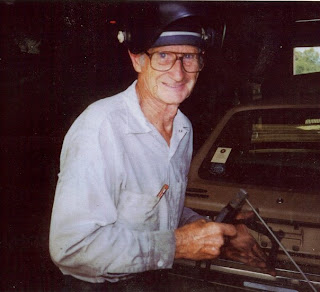A staggering 99 percent of prostate cancer patients treated with proton therapy believe they made the best treatment decisions for themselves, according to a new report released today at the National Proton Conference in Washington, D.C. The report analyzed outcomes and satisfaction of approximately 6,400 prostate cancer patients, more than 80 percent of whom received treatment at Loma Linda University Medical Center's (LLUMC) James M. Slater Proton Treatment and Research Center.
"This report reaffirms the results we've seen from our patients for the past 22 years and supports the mountain of evidence regarding the efficacy of proton therapy," said Jerry D. Slater, M.D., chairman of the LLUMC center. Dr. Slater and Dr. David A. Bush, vice-chairman of the department of radiation at LLUMC, recently co-authored a similar study entitled "Multi-Institutional Patient-Reported Quality of Life After Proton Therapy for Prostate Cancer Compared to Non-Treated Men."
The just-released report was commissioned by the National Association for Proton Therapy (NAPT) and conducted by Dobson DaVanzo & Associates, LLC, an independent health economics and policy consulting firm. It looked at patient-based outcomes analysis and included personal questions that provided meaningful data that helps physicians make treatment decisions.
Not only did approximately 99 percent of the patients surveyed believe they made the best treatment decision for themselves, but an almost equal number - almost 98 percent - reported that they had recommended proton therapy to others.
Additional key findings of the report included:
-- Approximately 96 percent of patients were satisfied or extremely satisfied with proton therapy.
-- Ninety-two percent of patients reported that their quality of life was better or the same today than it was before their treatment. Only 8 percent stated that their quality of life was worse.
-- Ninety-two percent of respondents reported that physical health or emotional problems did not interfere, or interfered very little, with their social activities.
-- Those who completed proton therapy for the treatment of prostate cancer had similar urinary, bowel and hormonal health-related quality-of-life (HRQOL) measures compared to healthy individuals. For patients who received hormone therapy in addition to proton therapy, lower sexual HRQOL measures were reported. However, when looking at patients who received only proton therapy for the treatment of prostate cancer and who did not receive hormone or photon therapy, proton therapy patients reported lower HRQOL than healthy individuals in only one category, "sexual bother," which refers to annoyance related to their sexual symptoms.

In addition to prostate cancer, proton therapy is effectively used to treat many different types of cancer. The outcomes of the NAPT report can be attributed to the pinpoint accuracy of the highly targeted proton beams. According to Dr. Slater, "Proton therapy is extremely effective as a treatment for prostate cancer because the targeted proton beams spare surrounding healthy tissue and minimize the typical side effects from standard photon beam radiation including incontinence and impotence."
Since LLUMC introduced modern proton treatment for cancer into the mainstream in 1990, there have been countless studies and trials that have shown proton therapy to be the treatment of choice for many types of cancer. Over the years proton treatment has been refined and, coupled with leading-edge technology, has become one of the best treatment options for doctors and patients. While prostate cancer remains one of the primary uses for proton therapy, the pinpoint accuracy of the proton beam also makes it a highly effective form of treatment for many other types of tumors including those found in the head, neck, lung and breast.
About LLUMC's Proton Treatment and Research Center
Established in 1990 Loma Linda University Medical Center Proton Treatment and Research Center was the first hospital-based proton therapy center in the world. Today the center uses proton beam technology for many types of cancers and has treated more patients than any other proton treatment center in the world. The center is part of LLUMC's comprehensive health system, which is widely respected as a healthcare leader pioneering work in such areas as organ transplants, proton treatment for cancers, cardiac care, physical rehabilitation, and acute pediatric and adult care as well as treatments for chemical dependence and other behavioral disorders. The health system - which includes Loma Linda University Medical Center and Children's Hospital, LLUMC - East Campus, Behavioral Medicine Center, Heart and Surgical Hospital, LLUMC-Murrieta and physician clinics - collectively sees over 30,000 inpatients and about 750,000 outpatient visits a year.







.jpg)




.jpg)








